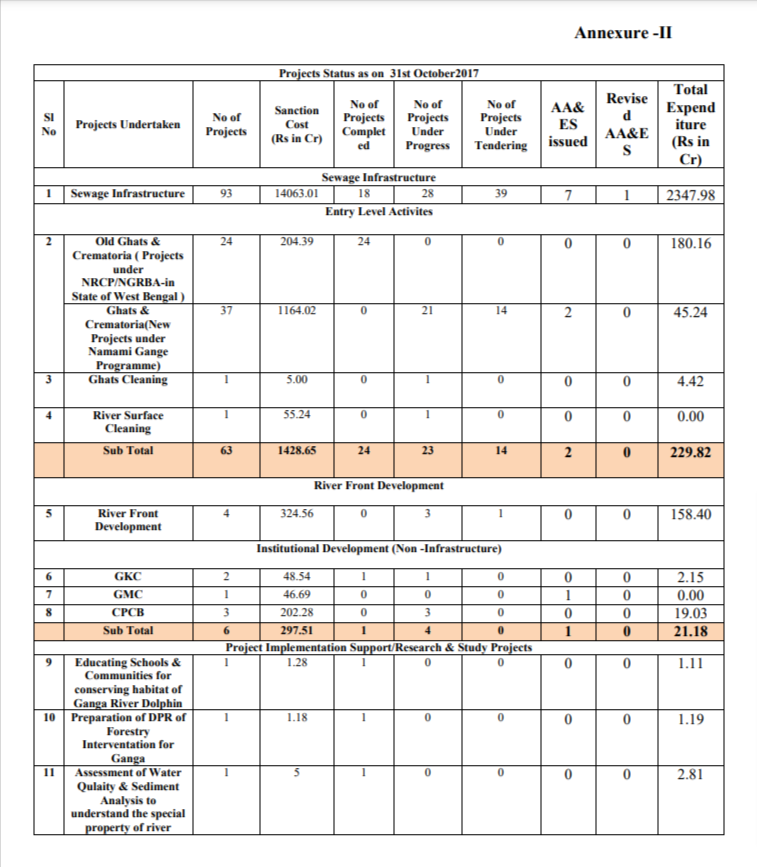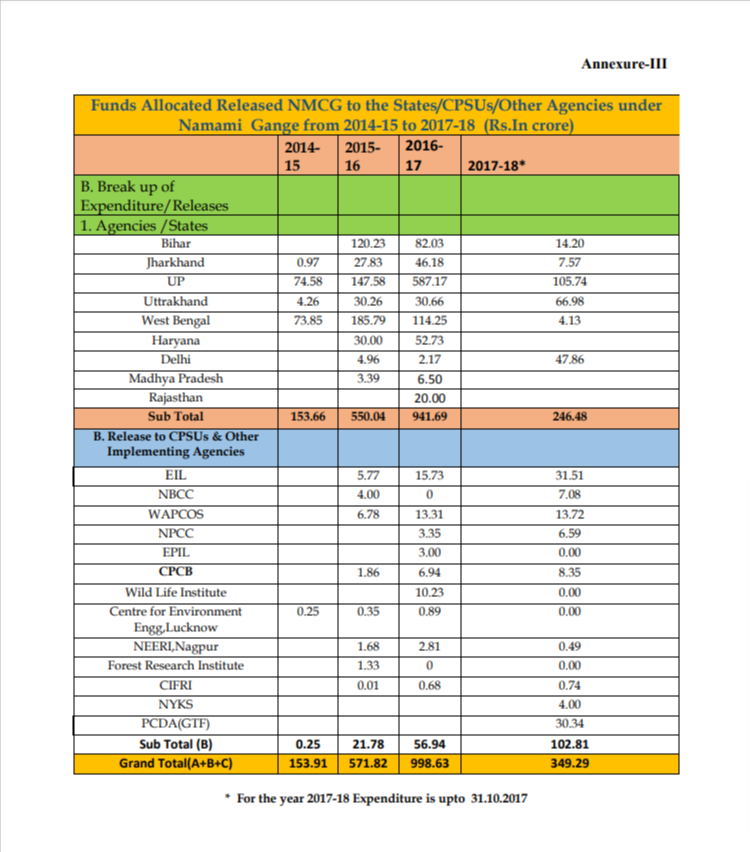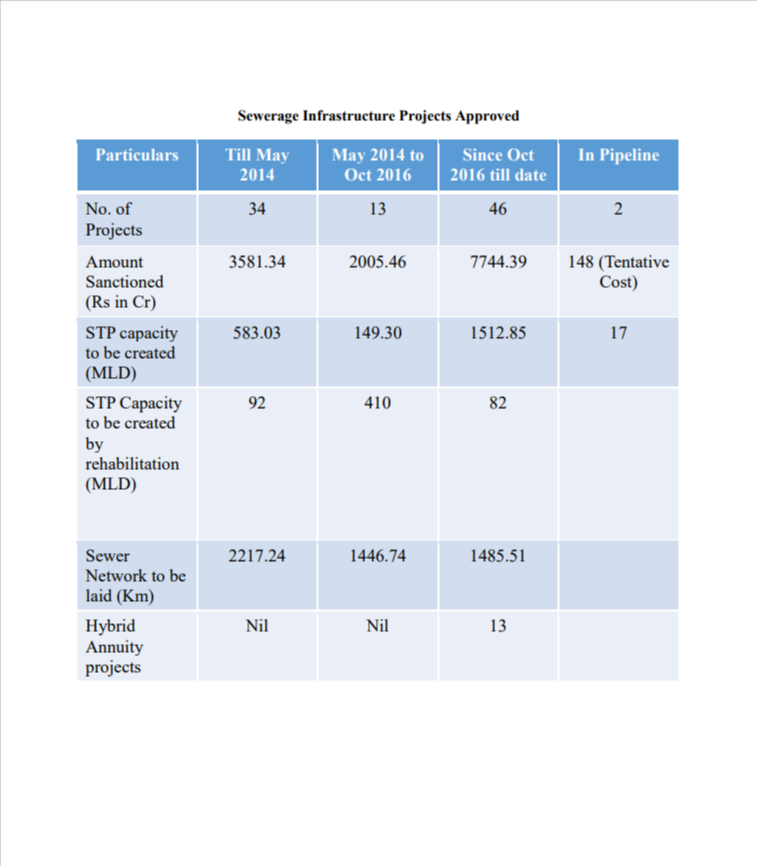This content has been archived. It may no longer be relevant
Namami Gange Yojana 2025, An Integrated Conservation Mission called Namami Gange Programme was approved by the Union Government as a ‘Flagship Programme’ in June 2014 with a budget of Rs. 20,000 crore to achieve the twin objectives of pollution abatement, conservation, and the rejuvenation of the National River Ganga.
The Namami Gange Yojana is an umbrella program that combines the previous and ongoing initiatives by increasing efficiency and supplementing them with more comprehensive interventions. Through the Namami Gange Programme, the Government of India is supporting the efforts made by the State Governments to reduce pollution in the River Ganga.
Each day, 500 million liters of wastewater from industrial sources are dumped directly into the Gange. In many places, the wastewater entering the river is entirely untreated and raw.
Namami Gange Yojana:
- Namami Gange Program is being worked under the Department of Water Resources, River Development, and Ganga Rejuvenation, Ministry of Jal Shakti.
- The program is being carried out by the National Mission for Clean Ganga (NMCG), and its state partner associations i.e State Program Management Groups (SPMGs).
- NMCG is the execution wing of the National Ganga Council (set in 2016; which supplanted the National Ganga River Basin Authority – NGRBA).
- It has Rs. 20,000-crore, centrally-subsidized, non-lapsable corpus and comprises almost 288 activities.
Namami Gange Yojana Need:
- River Ganga has critical financial, ecological, and cultural value in India.
- Ascending in the Himalayas and streaming to the Bay of Bengal, the waterway navigates a course of in excess of 2,500 km through the fields of north and eastern India.
- The Ganga basin- which additionally stretches out into parts of Nepal, China, and Bangladesh – represents 26% of India’s landmass.
- The Ganga additionally fills in as perhaps India’s holiest stream whose social and otherworldly importance rises above the limits of the bowl.
Namami Gange Yojana Features:
- Under the aegis of the State Program Management Groups (SPMGs) and the National Mission for Clean Ganga (NMCG), the States, Urban Local Bodies, and Panchayati Raj establishments will be engaged with Namami Gange Yojana.
- Setting up a waterway-driven metropolitan arranging cycle to work with better residents associations through intercessions at stream fronts and ghats.
- Improvement of effective water system techniques and levelheaded horticultural practices under this program.
- The Center assets 100 percent of the undertakings/exercises under this program.
- The Center gives resources activity and utilizations an SPV/PPP strategy for battling contamination areas of interest.
- Accentuation on composed instruments among offices and services of the Central and State Government.
- Focus on contamination disposal.
Namami Gange Scheme Implementation:
- The implementation of Namami Gange Yojana is divided into:
- Entry-level activities for immediate impact,
- Medium-term activities that are to be implemented within five years, and
- Long-term activities to be implemented within ten years.
- The Namami Gange Yojana is implemented by a three-tier mechanism for task monitoring including of:
- A high-level task force under Cabinet Secretary assisted by the NMCG at the national level,
- A state-level committee under Chief Secretary assisted by the SPMG at the state level, and
- A district-level committee under the District Magistrate.
Pillars of Namami Gange Yojana:
The scope of activities taken under the Namami Gange program is based on the pillars. The main pillars of this program are as follows-
- Sewerage Treatment Infrastructure
- Afforestation
- Public Awareness
- Biodiversity
- River-Surface Cleaning
- Ganga Gram
- River-Front Development
- Industrial Effluent Monitoring
Activities Under Namami Gange Programme:
The activities under the Namami Gange Yojana are as follows-
Creating Sewerage Treatment Capacity-
In Uttar Pradesh, Uttarakhand, Jharkhand, Bihar, and West Bengal, 63 sewerage management projects are established, and 12 projects are currently under implementation.
River Surface Cleaning-
Under this program, floating solid waste is collected and disposed of at 11 locations on the surface of rivers and ghats.
Creating River-Front Development-
A total of 33 entry-level projects and 28 river-front development projects have been initiated for the renovation, construction, and modernization of 118 crematoria and 182 ghats.
Afforestation-
Through Wildlife Institute of India, Central Inland Fisheries Research Institute, and Centre for Environment Education, forestry interventions for Ganga have been initiated for five years (2016-2021).
Bio-Diversity Conservation-
There are many biodiversity conservation projects underway, such as Fish and Fishery Conservation in the Ganga River, Biodiversity Conservation and Ganga Rejuvenation, and Ganges River Dolphin Conservation Education. Five biodiversity centers have been established in Allahabad, Dehradun, Varanasi, Narora, and Barrackpore to help restore priority species.
Industrial Effluent Monitoring-
In this program, inspections of Grossly Polluting Industries (GPIs) are conducted for compliance verification against specified environmental norms. They are also inspected annually for compliance verification of the process modification and pollution norms through third-party technical institutes. Action has been taken and closure directions are issued against 110 non-compliant GPIs under the Environment (Protection) Act.
Public Awareness-
In order to increase community participation and public outreach, numerous workshops, events, conferences, and seminars have been organized. Many awareness activities have been conducted through campaign rallies, exhibitions, cleanliness drives, plantation drives, and competitions. For broad publicity, mass media such as radio, TV, and print media have published advertisements, advertorials, and featured articles.
Ganga Gram-
In five states, the Ministry of Drinking Water and Sanitation identified 1,674 Gram Panchayats to be constructed toilets. A consortium of seven Indian Institutes of Technology has been contracted to prepare a Ganga River basin plan, and 13 IITs adopted 65 villages to be transformed into model villages.
Namami Gange Yojana PIB:
Details of Funds Spent on Namami Gange Programme on 26th July 2021 are as follows-
An Indian Government has sent off the Namami Gange Program in June 2014, with an all-out economical expense of Rs.20,000 crore to achieve the twin goals of viable decrease of contamination, preservation, and restoration of the National River Ganga and its feeders. The spending plan for the program is given in the Demands to Grants for the Ministry of Jal Shakti. The funds distributed and used from the monetary year 2014-15 till 30 June 2021 are given below.
| Financial Year | Final Allocation (Rs. in crore) | Actual releases by Government of India to National Mission for Clean Ganga(Rs. in cr.) |
| 2014-15 | 2,053.00 | 326.00 |
| 2015-16 | 1,650.00 | 1,632.00 |
| 2016-17 | 1,675.00 | 1,675.00 |
| 2017-18 | 3,023.42 | 1,423.12 |
| 2018-19 | 2,370.00 | 2,307.50 |
| 2019-20 | 1,553.44 | 1,553.40 |
| 2020-21 | 1,300.00 | 1,300.00 |
| 2021-22* | 1450.02** | 575.00 |
| Total | 15,074.88 | 10,792.02 |




Here, we cover a small piece of information about the Namami Gange Yojana. For more information visit the NMCG official website. Stay tuned to get notified about the other Government schemes.
